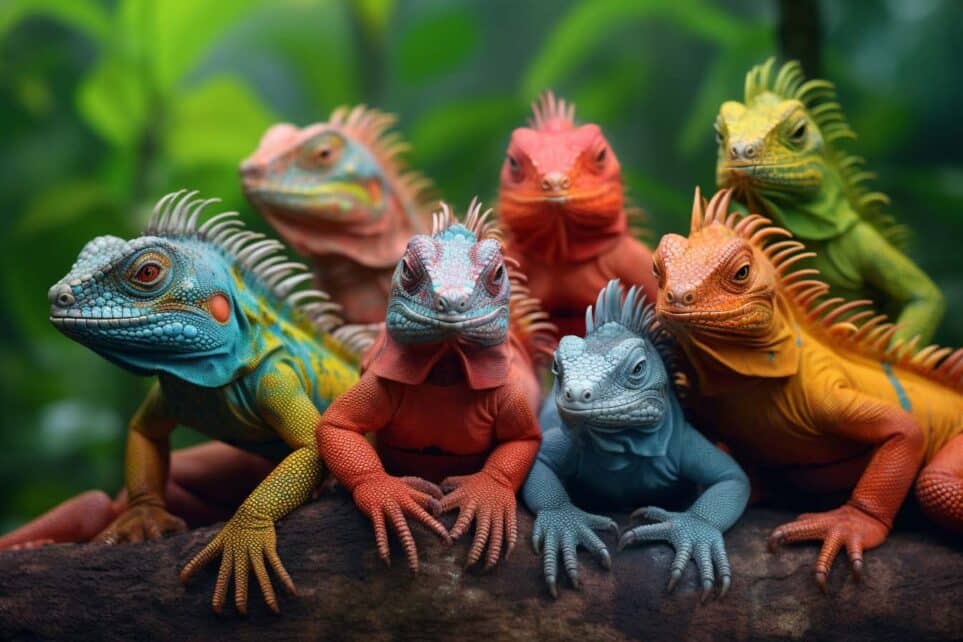If you’ve ever seen an iguana in the wild or as a pet, you know that they come in a variety of colors. But did you know that iguanas can change colors depending on their mood, environment, and other factors? In this article, we’ll explore the many colors of iguanas and what they mean.
Green Iguanas
The most common color for iguanas is green, and this is the color that most people associate with these reptiles. Green iguanas can range in shade from bright lime green to a more muted forest green. Their skin can also have a slightly yellowish tint, especially on their legs and underbelly.
Gray Iguanas
Another standard color for iguanas is gray. This can be a light gray or a darker, almost charcoal gray. Gray iguanas often have a mottled pattern on their skin that can resemble tree bark. Their tail or legs may also have black or dark gray stripes.
Brown Iguanas
Brown is another color that iguanas can exhibit, although it’s less common than green or gray. Brown iguanas may have a reddish or coppery tint to their skin. Some brown iguanas may also have a mottled or speckled pattern on their skin.
Blue Iguanas
Blue iguanas are relatively rare, but collectors and enthusiasts highly prize them. These iguanas have a bright blue color that can range from sky blue to a deeper, more vivid blue. Blue iguanas are native to the Grand Cayman island in the Caribbean and are considered endangered.
Orange Iguanas
Like blue iguanas, orange iguanas are also quite rare. These iguanas have a bright orange color ranging from a soft peach to a fiery orange. Orange iguanas are highly sought after by collectors and are often bred for their unique coloration.
Color Changes in Iguanas
While some iguanas may exhibit a single color throughout their life, others can change colors depending on various factors. For example, an iguana may darken its skin color to absorb more heat on a cold day or lighten its skin to cool off on a hot day. Iguanas may also change colors when stressed or afraid, which can be an essential signal to their owners or handlers.
In conclusion, the many colors of iguanas reflect their unique adaptations and behaviors. By understanding these colors and their meaning, we can better appreciate these beautiful reptiles and care for them properly. Whether you’re a seasoned iguana owner or a curious wildlife enthusiast, there’s always more to learn about these fascinating creatures.

